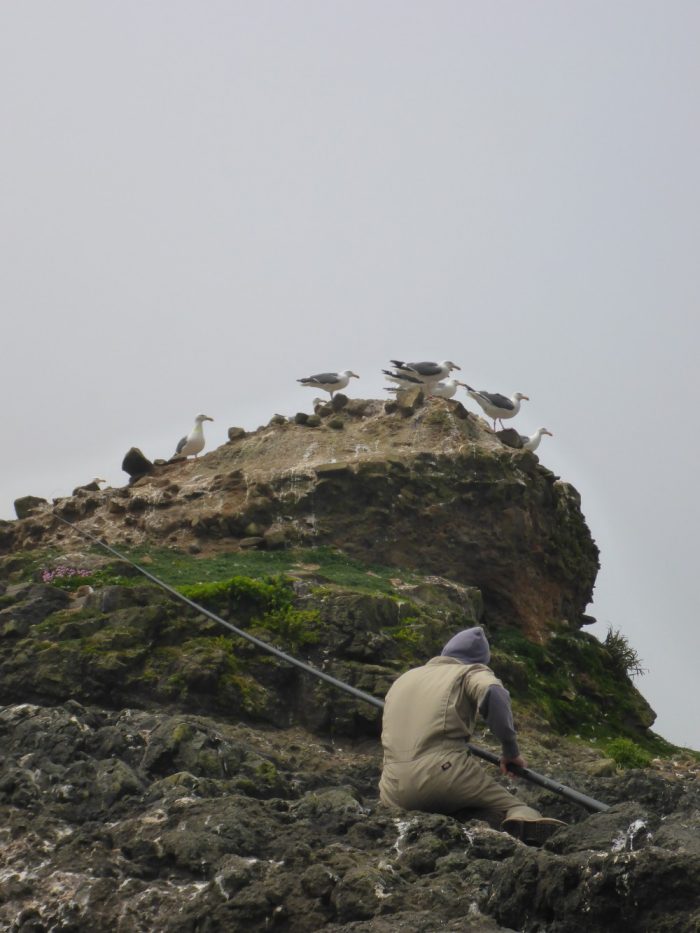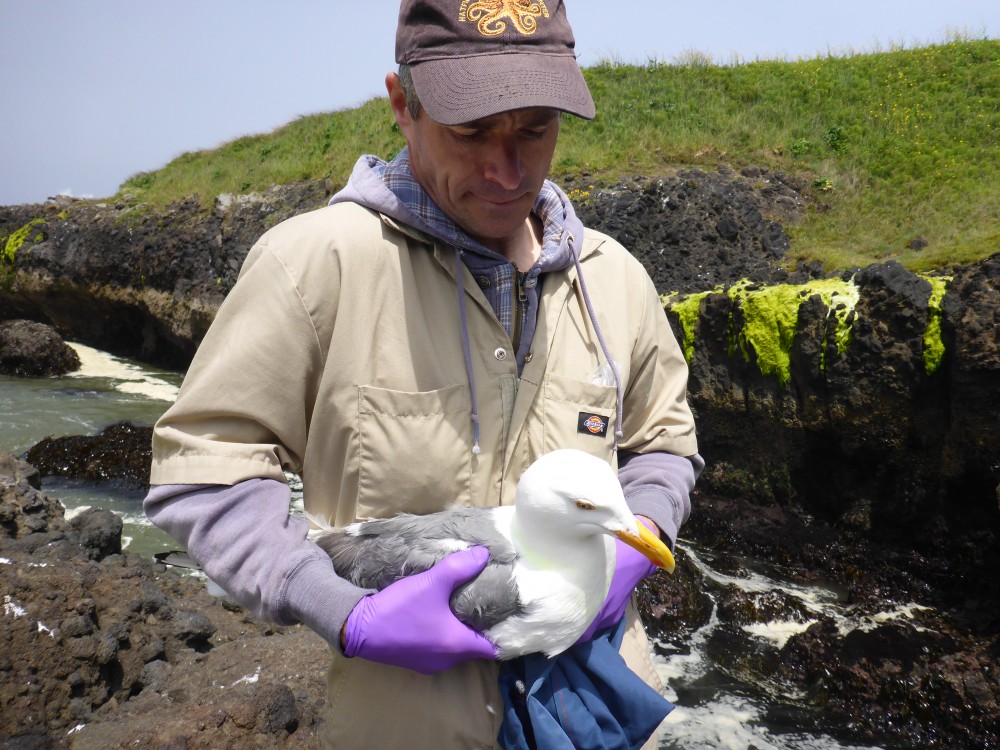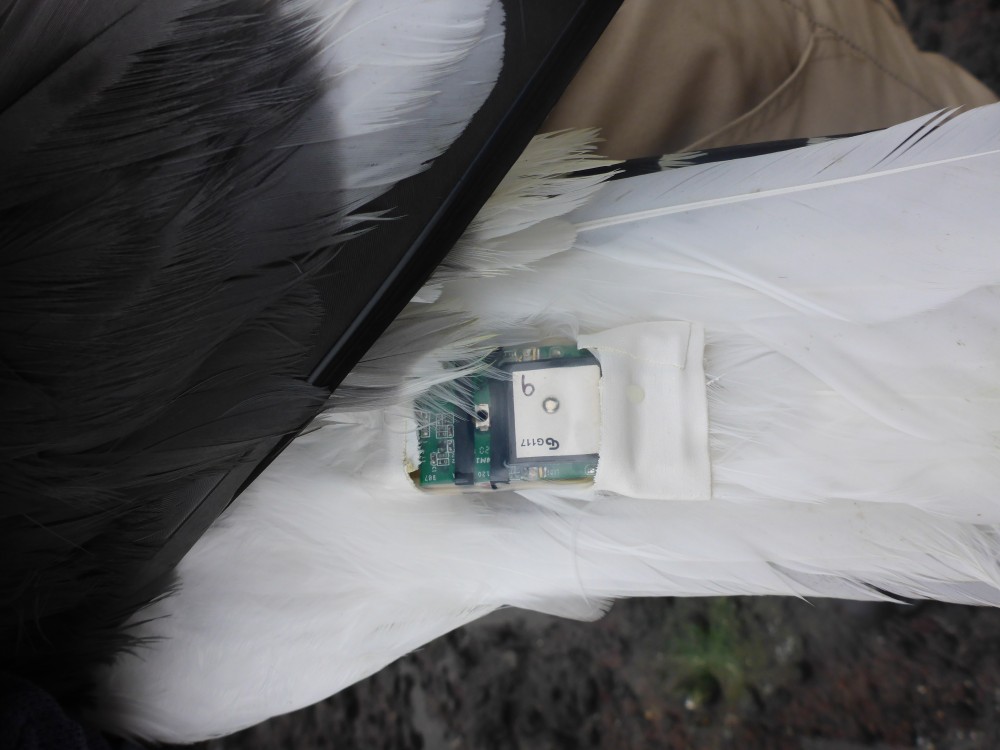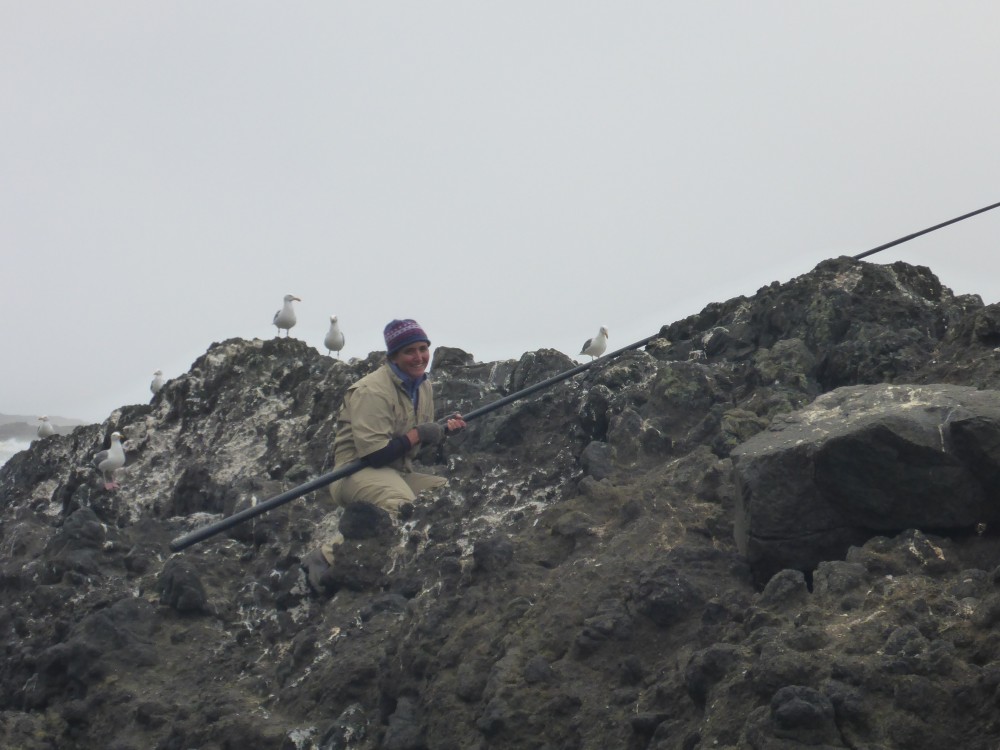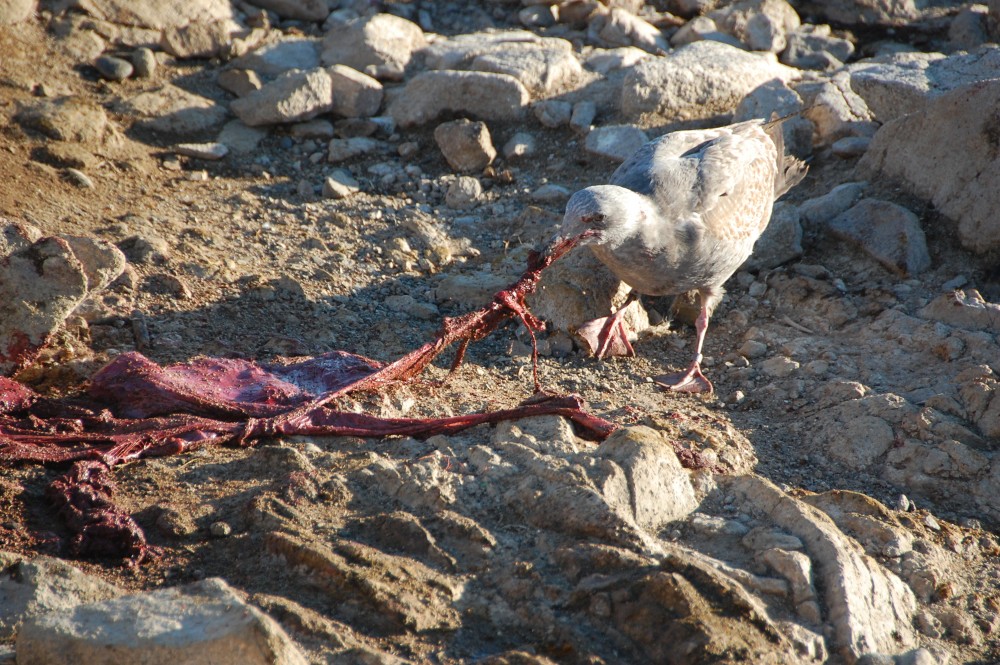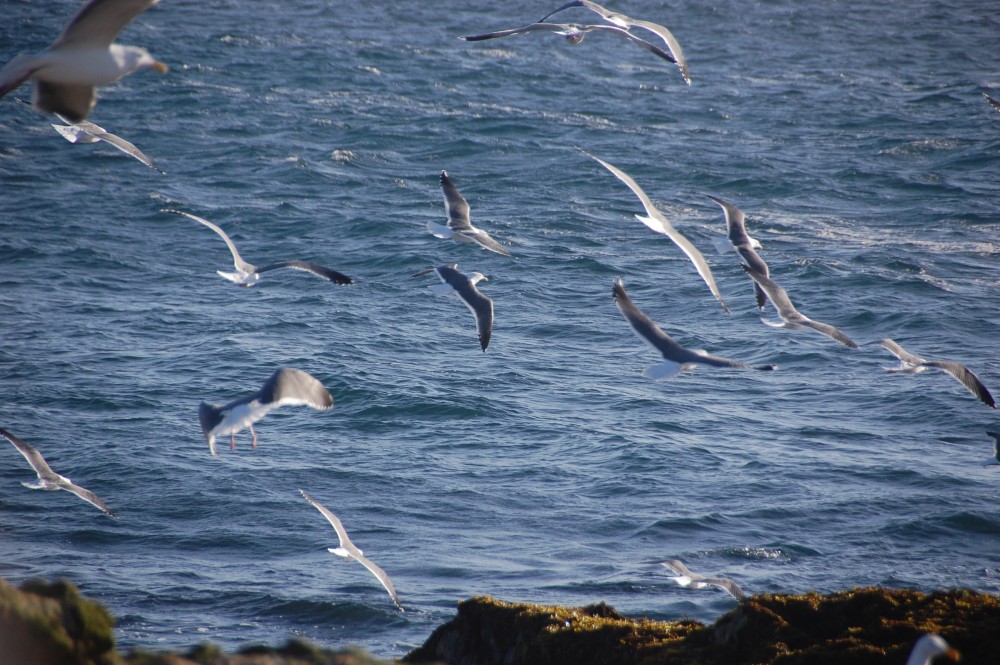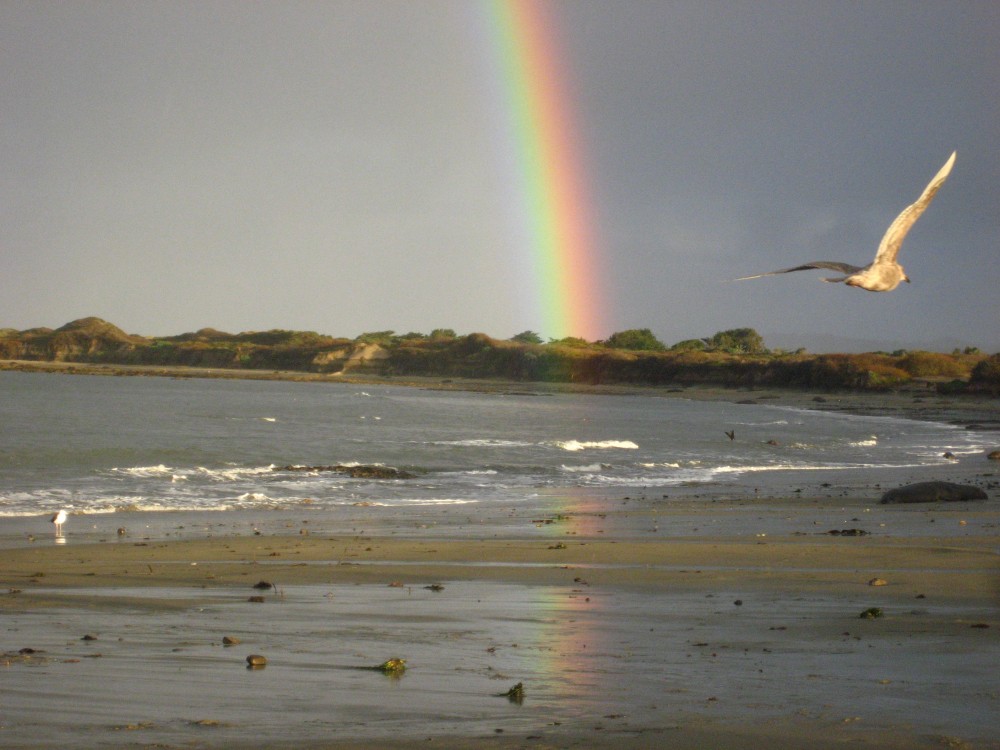Hello everyone,
Florence here with an update about the final numbers from this summer’s gray whale field season.
For folks just hearing about the project, my team of interns and I spent the summer alternating between study sites at Depoe Bay and Port Orford to conduct fine-scale focal follows of gray whales foraging in near-shore Oregon waters using a theodolite. That is to say, we gathered 10,186 ‘marks’ or ‘locations’ where whales came to the surface, and by connecting the dots, we are able to create tracklines and analyze their movement patterns. The idea is to document and describe gray whale foraging behavior in order to answer the questions: Are there patterns in how the whales use the space? Is there a relationship between foraging success and proximity to kelp beds? Do behaviors vary between individuals, location, or over time during the season?

While at our study sites, we often received questions about vessel disturbance on the whale’s behavior. Over the course of the summer, we saw whales completely ignore boats, approach boats, and actively avoid boats. Therefore, we documented these vessel interactions in order to ask questions such as: Does vessel disturbance alter behavior? How close is too close? Does the potential for vessel disturbance vary depending on (1) size of motor, (2) speed of approach, (3) type of vessel, i.e. kayak, fishing boat, tour boat, (4) the number of vessels already in the area, (5) amount of time a vessel has been following a whale, (6) time of season, (7) the presence of a calf or other whales? The end goal, once the data have been analyzed, is to bring our results to local vessel operators (commercial and recreational) and work together to write reasonable, effective, and scientifically informed guidelines for vessel operations in the presence of gray whales.
And now, the numbers you’ve all been waiting for, here is the tally of our data collection this summer:
| Boiler Bay | Graveyard Point | Humbug Mountain | |
| Whales total | 80 | 73 | 28 |
| Boats total | 307 | 105 | 7 |
| Total survey time (HH:MM:SS) | 122:22:41 | 72:49:17 | 50:22:35 |
| Total survey time with whales (HH:MM:SS) | 64:47:54 | 80:39:57 | 22:59:00 |
| Total Marks | 4744 | 4334 | 1108 |
Table 1. Summary of survey effort for gray whale foraging ecology field season summer 2015




So, what does this all mean? Well, the unsatisfying answer is of course: we don’t know yet. However, it is my job to find out! I will spend the fall and winter processing data, writing and running behavioral models, communicating my successes and frustrations, and finally presenting my results to the community.
The human eye is well adapted to pick out patterns. Test yourself – what trends can you see in these images? Are there areas that the whales seem to prefer over other areas? In the Port Orford images with Keyboard & our kelp patches, does our theory of a relationship between whale presence and kelp patches seem valid?
This field season would not have been possible without the help of some truly excellent people. Thank you Cricket and Justin and Sarah for making up the core of Team Ro”buff”stus. It was a pleasure working with you this summer. Thank you to guest observers and photographers Era, Steven, Diana, Cory, Kelly, Shea and Brittany for filling in when we needed extra help! Thank you to our support network down in Port Orford: Tom, Tyson and the team at the Port Orford Field Station – we appreciate the housing and warm welcome, and to Jim and Karen Auborn and the Port of Port Orford for allowing us access to such a fantastic viewing location. Thank you to Oregon State Parks for allowing us access to the field sites at Boiler Bay and Humbug. Finally, thank you to Depoe Bay Pirate Coffee Company for keeping us warm and caffeinated on many foggy, cold early mornings. This work was funded by the William and Francis McNeil Fellowship Award, the Wild Rivers Coast Alliance, and the American Cetacean Society: Oregon Chapter.
Fair winds,
Florence













































